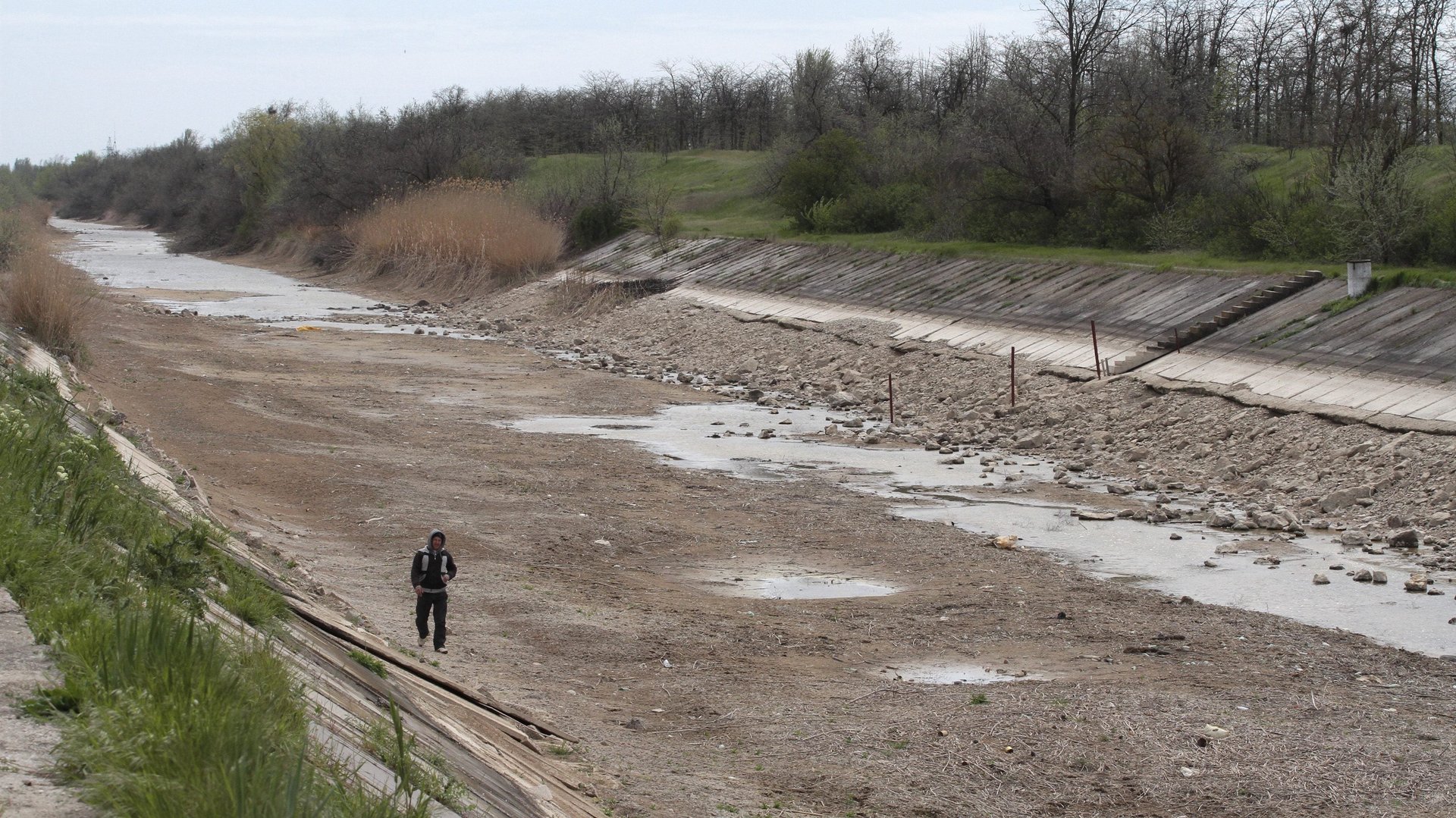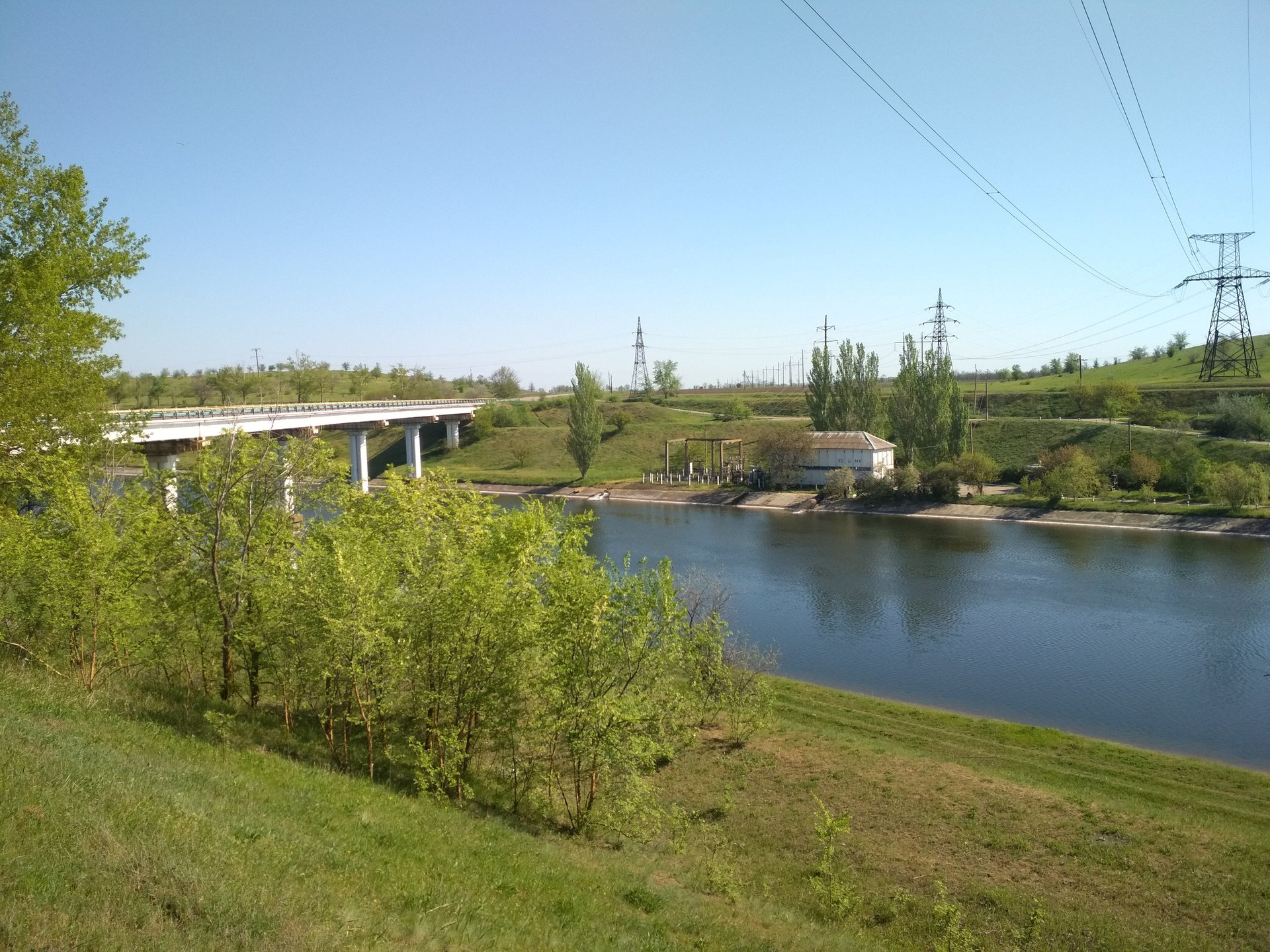As Russia fights Ukraine in Donbas, locals cooperate to keep the water flowing
Before the war this year, foreigners went to the Donbas region, in eastern Ukraine, for different reasons. Some went to mountain resorts, others to check out the coal or metal ore mines, still others to monitor the fragile peace after Russian-backed separatists declared breakaway republics in 2014.


Before the war this year, foreigners went to the Donbas region, in eastern Ukraine, for different reasons. Some went to mountain resorts, others to check out the coal or metal ore mines, still others to monitor the fragile peace after Russian-backed separatists declared breakaway republics in 2014.
Sophie Lambroschini went to inspect Donbas’ water system.
Beginning in 2018, Lambroschini, a historian and sociologist at Berlin’s Centre Marc Bloch, visited pumping stations, filtration stations, repair shops, and canals, trying to understand how Donbas received its water even after new, contested borders emerged in 2014. Remarkably, Voda Donbasu, the local water company, kept water flowing through the Siverskyi Donets Donbas (SDD) canal, the region’s arterial water source, as well as through the pipes in towns and villages. “There was no organized, top-down, negotiated decision on managing water,” Lambroschini said. “It was very much up to the local managers of the water company to figure it out themselves.”
The calculus of Russia’s war on Ukraine, and particularly its latest Donbas offensive, includes a host of commonly discussed factors: the coal and ores of eastern Ukraine; a Russian land corridor to Crimea; a naval advantage; Vladimir Putin’s tsarist ambitions for a greater Russia. Few people bring up water—but it’s there, playing both surprising and strategic roles. In Donbas, Ukraine has been forced to work with separatists to keep towns and industries watered—an illustration of the convoluted interdependencies in a region now being painfully pulled apart. But, as is evident from elsewhere in Ukraine, the war can end up weaponizing water, killing even the imperfect cooperation that has prevailed in Donbas until now.
The Donbas water company that could
Donbas’s water system dates back to the 1930s, when the Soviet Union set up a public utility to water a rapidly industrializing region. Two decades later, the government built a 200-mile canal from the Siverskyi Donets River in the north, down to the town of Donetsk and then to Mariupol. This Siverskyi Donets Donbas (SDD) canal is pretty much the only source of water for the 6 million or so people who lived in Donbas before the Russian invasion, said Erich Kaschka, the director of Posch & Partners, an engineering firm that surveyed the area for a UNICEF risk assessment in 2017. The canal was an impressive feat of civic design, he said, given that four lifting stations first pump water uphill before allowing the land’s gradient to run it down for use. But the system “is now very old, and not in good condition any more,” Kaschka said.
In 2014, a “contact line”—a disputed border—came into being between the Russian-backed republics and Ukraine. Suddenly, the SDD canal found itself running across different jurisdictions: first through Ukraine, then over the contact line into the breakaway republics, and then back into Ukraine towards Mariupol. Other infrastructure that similarly straddled the line could be disentangled; Ukraine separated its electricity grid, for instance. “But you can’t just cut a water system in two,” Lambroschini said.
As a result, Ukraine and the republics became oddly dependent on each other to keep water flowing to both territories. Of the 11,000-odd employees of Voda Donbasu, the company running the water system, 7,000 lived in Ukraine and 4,000 or so found themselves across the contact line. “They’d communicate by telephone, across the line, to fix problems,” Lambroschini said. “They’d run repair shops to make spares for parts that are so old no one makes them any more.” Voda Donbasu had to figure out how to collect rubles as revenue in the separatist areas and then integrate that revenue back into its balance sheet.
After the invasion in February, parts of the system stopped functioning when the power supply turned erratic. Water is being trucked into towns, Lambroschini said. A filtration system in Donetsk was shelled. A bus taking Voda Donbasu employees to work was shot at. “When I last spoke to people there, three or four days, ago, they still had skeleton crews working and communicating across front lines,” Lambroschini said. “Because you can’t just lock up these systems and say you’ll open it up again when things settle down. These systems have to operate continuously.”
It’s difficult to know if Russia views the SDD canal as something to snatch, Lambroschini said, “because no one really understands Putin’s strategy right now… If Russia was motivated by strategic control of infrastructure, why did they destroy so much of it in Mariupol?” But in the aspiration to annex any larger part of eastern Ukraine, she said, “the water system will end up being strategic.”
The future of water in Donbas
Any scenario in which Donbas’ water is weaponized and restricted, either by Russia or Ukraine, is a worrying one for the citizens who depend upon the SDD canal. To know what such a future might look like, one needs to look only a little further south to Crimea, where Russia has executed a water grab.
If it wasn’t for the 250-mile North Crimean Canal, built in stages in the 1960s and the 1970s, the Crimean peninsula would be a semi-arid steppe. The canal turned northern Crimea into a land of vineyards and peaches, lavender and roses, rice and onions. Harvests increased by a multiple of six or seven times, said Anna Olenenko, a Ukrainian environmental historian.

After Russia annexed Crimea in 2014, Ukraine blocked water supply through the canal. (“Ukraine had a right to do that,” Olenenko said. “Under the Geneva Convention, water supply is the responsibility of the aggressor state.”) Harvests have plummeted since then. Rice cultivation has nearly disappeared. On several occasions, Russia explicitly expressed its objection to Ukraine’s actions, making the control of water an automatic priority in its attacks this year.
Just two days into the war, Russian soldiers destroyed a dam that had been built to cut off water into the North Crimean Canal. Weeks later, in mid-March, the Russians had gotten water flowing through the canal again, Olenenko said. Roughly a third of the canal lies in areas controlled, as of January, by Ukraine, and Olenenko said that Russia will attempt to retain as much of the territory as possible, to ensure that Crimea remains watered. “I really think this canal,” Olenenko said, “was one of the reasons for Russia to start its war in Ukraine this year.”